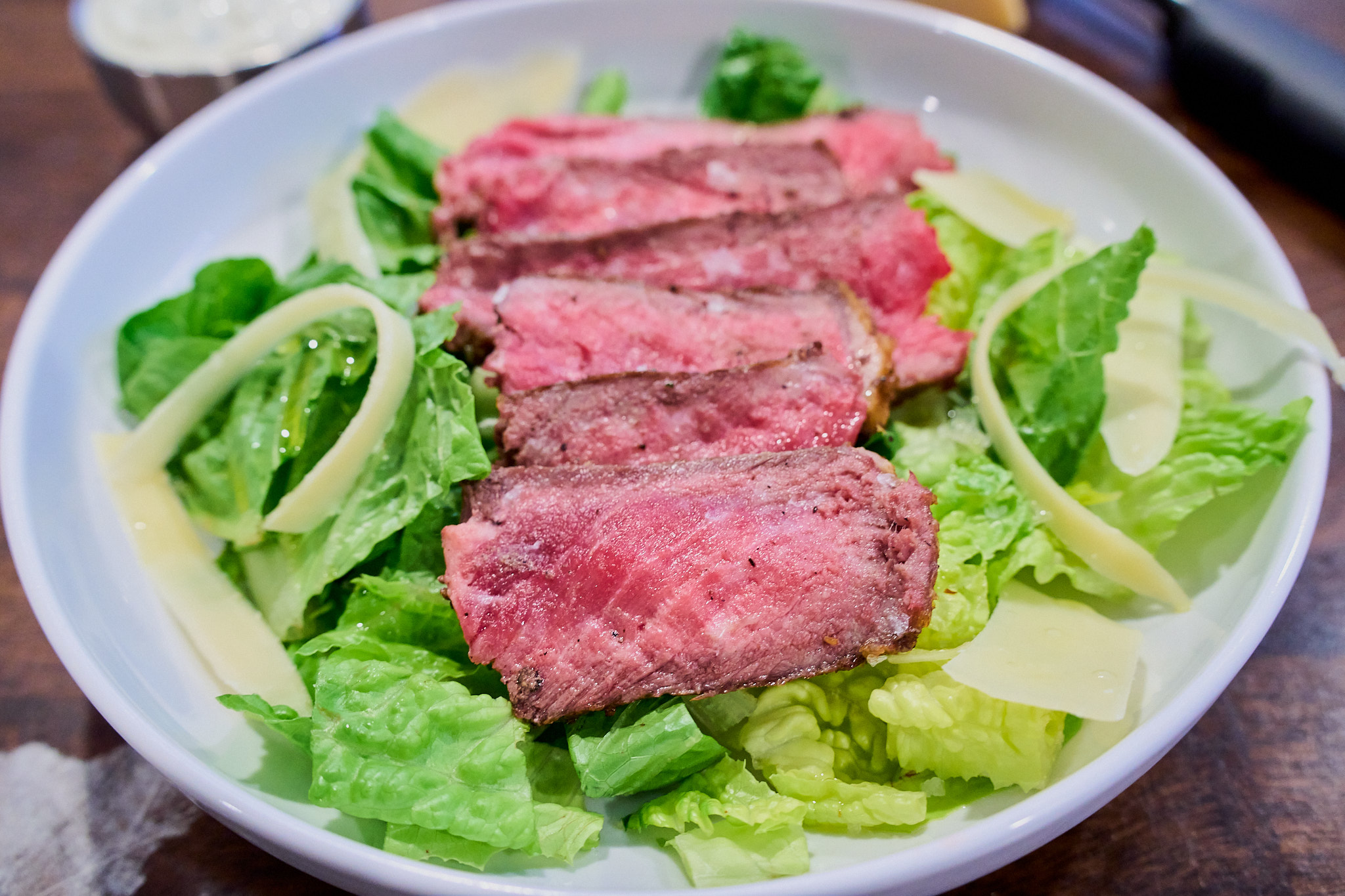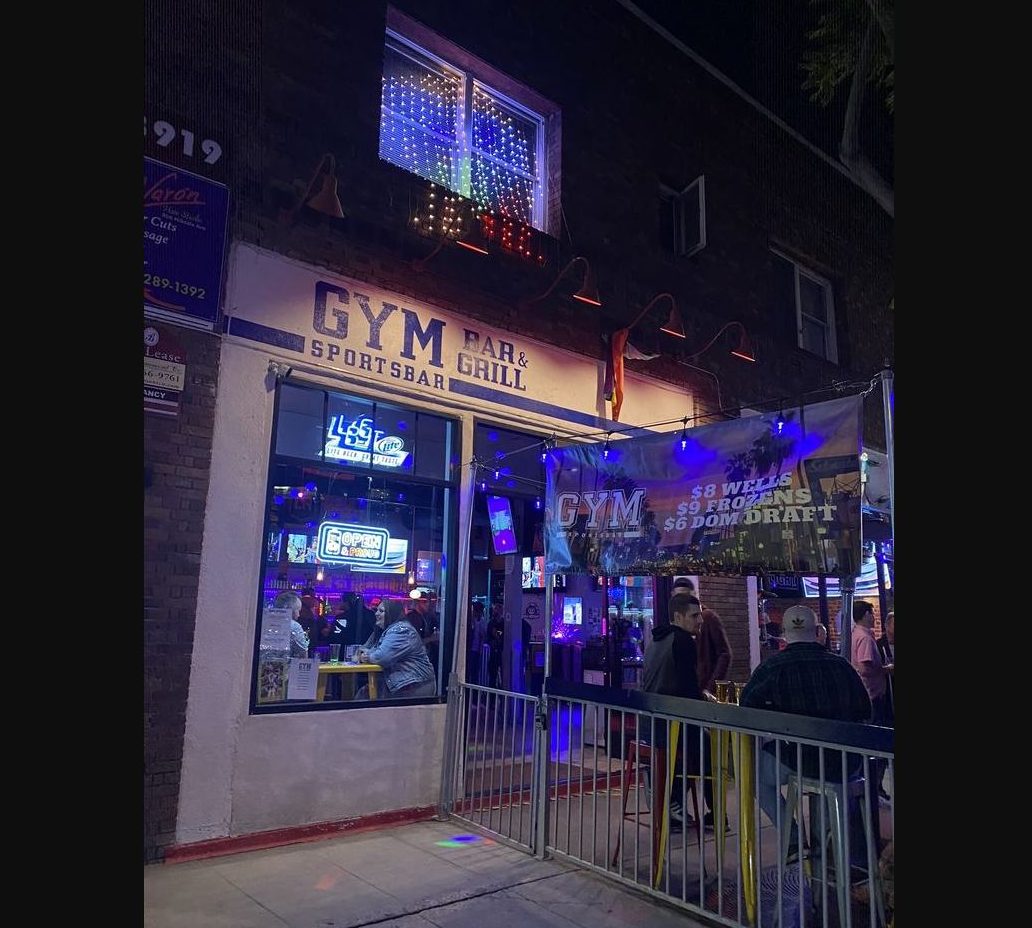Living
WeHo grapples with short-term rental regulations
But in the gig-economy, home-sharing is a lifesaver for some LGBT people


Airbnb rooms and apartments for short-term rent is the subject of much discussion in LA County. West Hollywood City Council will chime in on the debate in December. (Photo Airbnb)
“Ridiculous,” Brad Keistler, a 75-year-old gay man who owns a multiunit property near the Pacific Design Center in West Hollywood, said. He was referring to a proposed 90-day cap on the number of room nights allowed for hosted short-term rentals (STRs) now before the WeHo City Council.
As you may be aware, how the home-sharing economy is affecting communities across the nation is a huge political football right now. The City of Los Angeles is considering a revision to its policies and cities from Palm Springs to Pasadena to San Jose have all drafted different laws.
Keistler said home-sharing is “good for so many reasons.” He enjoys meeting people from all over the world, saying, “I live alone and like the company.” For him, a 90-day restriction on hosted STRs would be “too restrictive.”
Yet despite references to the proposed 90-day cap, in truth, it’s not the only option. WeHo’s limit could become 180 days or even remain at the current complete ban on any STRs under 31 days, whether hosted or not. Hosted means the property owner (in some cases tenant) remains on the property. Currently the city has no plans to revise the ban on non-hosted STRs.
If Keistler had his way, there wouldn’t be a ban. He sees no need for it. It should be said that he is a “super host” on Airbnb with a “98% approval rating.”
But “super,” or not, he’s not alone.
Loren Lewis, a former model, lives in a condo her son owns on Kings Road south of Santa Monica Boulevard. Up until WeHo’s 2015 ban on STRs, and her homeowners’ association also prohibiting them, she rented out her second bedroom often.
While she said “I love, love, love doing it” and that she’s “met wonderful people,” she also added: “I need the money.” Prior to the ban, Lewis, a divorcee receiving no alimony, earned up to $2,500 per month renting out her second bedroom, three times what she received from Social Security.
Describing the proposed 90-day cap as “very limiting,” Lewis prefers no cap at all for hosted STRs. A limit, she said, “makes it hard to survive.”
According to Airbnb, “25% of hosts use STR income to avoid eviction or foreclosure” and “50% use STR income as supplementation,” to pay everyday expenses, such as those for rent, a mortgage, food and transportation. Hosts in WeHo, they say, also “earn $9,000 in supplemental income every year.”
WeHo, no stranger to the challenges presented the gig and sharing economy, is an aging city of mostly LGBT residents — a majority are 50+ — and many Seniors are forced to find creative ways to supplement their income.
Juan M. (who asked that his last name not be used) is 68 years old and HIV positive. “My income producing years were robbed from me because of the AIDS crisis. I have no savings and will have to work to the end of my life,” he said. “But I earn almost half my rent by hosting out of towners in my little spare bedroom through Airbnb. If the city restricts that I’m forced out,” Juan, a renter who also drives for Uber and Lyft, told the Los Angeles Blade. “I’m not some rich landlord warehousing entire buildings full of luxury apartments for rent on Airbnb,” he added.
Juan, whose home is very well appointed and meticulously clean, says he vets his guests and requires more than a few days stay. “I look at their social media and google their names before I agree to allowing them to stay. And I usually restrict to month long stays or more. Lots of traveling nurses and creative people come to LA like that,” he said. He charges up to $70 per night and say it is “life changing money for me.”
WeHo’s City Council seems to be listening to hosts’ concerns, those outlining the monetary necessity of STRs, as well as those admitting they just rent out a room for personal satisfaction.
Still, opponents raise many objections. They point to noise, like loud music and partying, traffic congestion and losing the peace of mind of simply knowing one’s neighbors. As for non-hosted rentals, the biggest issue is the reduction of available long-term rental units driving up rents.
Keistler said he’s had “no complaints from neighbors, so doesn’t really get the concerns” about safety or strangers renting from him. “Tourists just come here to sleep. They are out all the time.”
He added that Airbnb is “self-regulating.” Hosts and renters post reviews online after a transaction and stressed how that can “go both ways.” In his view, this mechanism generally ensures a high-quality customer because the community decides.
As for traffic concerns, Lewis said most of her guests “use Uber” so they have no car. And regarding safety, she is “cautious” about whom she rents to. There are “verification processes in place” – hinting at Airbnb’s online process – but acknowledged “concerns are legitimate if nobody is on the property.”
The difference between hosted and non-hosted may be the line in the sand.
Three random WeHo residents – who are not part of the home-sharing economy with any online service – were asked for their perspective.
Rafael Bunuel, who owns a home on Rangely Ave. in the WeHo West area, says hosted STRs are OK because he trusts his neighbors. Not so with non-hosted. “Who do I call if there’s too much noise…the renters or the police?”
And Michael Rosenblatt, who rents one half of a duplex in the same area echoed that concern about non-hosted, saying, “Who is going to rent it?” For hosted, he’s fine with it because he knows his neighbor on the other side of his wall would address any problems from renters.
“For all I know they may already be doing it,” a middle-aged co-owner of a four-unit property just north of Pavilions in WeHo said. Preferring to remain anonymous, he was referring to whether his neighbors rent out their homes or spare rooms for STRs.
For him, there is no correlation with issues like noise or safety. Based upon his experience living in various areas of LA, such concerns may be more of a problem with long-term renters.
“It’s not about renting short term,” he said, “it’s about the people.” In his view, people coming to WeHo for STRs are generally professionals in need of corporate housing, or tourists with high incomes, two demos he is not worried about.
How are other cities handling this issue? According to information provided by Airbnb, Pasadena “allows hosts to list up to two properties if they are both at the host’s primary residence” and San Jose “has no limits on hosted primary residence stays [and a] 180-day cap on un-hosted.”
Similarly, the City of Los Angeles, also now considering room night bans of various lengths, currently “allows a cap of 180 days per year on non-hosted and no restrictions on hosted,” as per Airbnb and confirmed by the Los Angeles Blade.
While Llano of Airbnb would not state what West Hollywood should do outright, she did ask rhetorically: “How can the city come up with a plan that would allow the most number of people to benefit from home-shares?”
Religion & Faith
United Methodist Church removes 40-year ban on gay clergy
The New York Times notes additional votes “affirming L.G.B.T.Q. inclusion in the church are expected before the meeting adjourns on Friday

CHARLOTTE, N.C. — The United Methodist Church on Wednesday removed a ban on gay clergy that was in place for more than 40 years, voting to also allow LGBTQ weddings and end prohibitions on the use of United Methodist funds to “promote acceptance of homosexuality.”
Overturning the policy forbidding the church from ordaining “self-avowed practicing homosexuals” effectively formalized a practice that had caused an estimated quarter of U.S. congregations to leave the church.
The New York Times notes additional votes “affirming L.G.B.T.Q. inclusion in the church are expected before the meeting adjourns on Friday.” Wednesday’s measures were passed overwhelmingly and without debate. Delegates met in Charlotte, N.C.
According to the church’s General Council on Finance and Administration, there were 5,424,175 members in the U.S. in 2022 with an estimated global membership approaching 10 million.
The Times notes that other matters of business last week included a “regionalization” plan, which gave autonomy to different regions such that they can establish their own rules on matters including issues of sexuality — about which international factions are likelier to have more conservative views.
Food
Kane’s Cuisine: Vanilla crème brûlée
LA Blade White House correspondent Christopher Kane shares his love and passion of cooking writing in his weekly column

The LA Blade’s intrepid Washington D.C.-based White House correspondent serves up another of his delicious weekly recipes
WASHINGTON – Please pardon my delay. I was at the White House Correspondents’ Dinner on Saturday and started working on this dish on Sunday night when I realized, because I’d failed to read the whole recipe in advance, that it must chill for 4+ hours in the fridge.
Crème brûlée is a classic. As achievable as it is impressive, you can do 95 percent of the work ahead of time and then pop it under the broiler for a few minutes and voilà! Dessert is served. Add a scoop of vanilla ice cream to gild the lily.
I used 6-ounce ramekins. You can use any oven-safe dishes for individual portions; just adjust the bake time accordingly.

Recipe adapted from Mark Bittman, New York Times Cooking:
- Heat oven to 325° F
- Arrange four 6-ounce ramekins or other individually portioned baking vessels in a high-sided baking dish
- In a saucepan, combine 2 cups heavy cream, 1 vanilla bean, split lengthwise, and ¼ teaspoon salt; cook over low-medium heat until hot (but not bubbling). Remove from heat and remove vanilla bean after a few minutes. (Add 1 teaspoon vanilla extract now if you don’t have/didn’t use the bean)
- In a large bowl, beat 5 egg yolks with ½ cup granulated white sugar until light and fluffy. Stir in ¼ of the hot cream and then transfer back to your saucepan, using a spatula if necessary to get all the sugar/egg mixture. Stir until combined and then pour into your ramekins
- Boil enough water to fill your baking dish such that the water goes halfway up the ramekins. Transfer to your oven and bake for 35 minutes
- Allow to cool completely. Transfer to refrigerator and chill for 4+ hours or overnight
- When ready to serve, sprinkle about a teaspoon of sugar over each ramekin in an even layer, place them under a broiler (2-3 inches from the heat source), and cook until sugar is melted and browned, about 5 minutes. Alternatively, use a blowtorch
Food
Kane’s Cuisine: Challah bread
LA Blade White House correspondent Christopher Kane shares his love and passion of cooking writing in his weekly column

The LA Blade’s intrepid Washington D.C.-based White House correspondent serves up another of his delicious weekly recipes
WASHINGTON – My friend Jonathan Lovitz made a beautiful loaf of challah on Friday*** and was kind enough to share the recipe, which comes from food writer Jake Cohen’s bestselling “Jew-ish: A cookbook.”
Last night, I was slicing the challah in preparation to make Melissa Clark’s crème brulée French toast and accidentally took off the tip of my thumb with a very sharp serrated knife. Which is why the introduction to this week’s column is more brief than usual.

- In a stand mixer fitted with the whisk attachment, mix one cup water, heated to 115° F, with 1 packet active dry yeast and 2 tablespoons granulated white sugar. Allow to rest for 10 minutes as the yeast begins to foam
- Add 6 more tablespoons granulated white sugar, 4 tablespoons vegetable oil, ¼ cup honey, and 3 eggs, mixing on medium speed until uniform
- Swap whisk attachment for dough hook. Add 5½ cups all-purpose flour and 2 teaspoons salt and mix, gradually increasing the speed from slow to medium as the flour incorporates, until a smooth and elastic dough forms (3-4 minutes)
- Transfer to a lightly floured work surface to continue kneading by hand for about 5 minutes
- Grease a medium bowl and your hands with 2 tablespoons vegetable oil and add the dough ball, turning to coat. Cover with plastic wrap or a kitchen towel and rest in a warm place until it has doubled in size, about 1.5-2 hours
- Transfer dough to a clean work surface and divide into 4 or 6 equal pieces. Roll each of them into a long rope about 18” in length. Follow Cohen’s instructions on how to braid your challah or watch a tutorial on Youtube
- Transfer challah to parchment-lined baking sheet pointing diagonally toward the back left or right corner of your oven. Brush your dough with 1 egg, beaten, and allow it to rise for another hour
- Preheat oven to 350° F
- Brush your challah again with another egg. Sprinkle with poppyseeds, sesame seeds, fennel seeds, etc. along with flaky salt
- Bake for 40 minutes, rotating the baking sheet halfway through
***Jonathan recommends using brown sugar in the dough, along with a pinch of baking powder and an extra egg

Autos
Sport haulers: Jeep Grand Cherokee, Mercedes GLE-Class
Updated cabins, adept handling, and more

Now that March Madness and the Masters are over, it’s time for, well, everything else. For my husband and me, this means water sports, as in kayaks and rowing sculls, which is why we trekked to the Potomac for the George Washington Invitational regatta last weekend.
Alas, high winds splashed cold water on the event, canceling much of it. But there was still plenty of spirited camaraderie to rival “The Boys in the Boat.”
And I was reminded of my time years ago as a rower with D.C. Strokes, ferrying teammates to races up and down the East Coast. Back then my ride was a dated, rather cramped four-door sedan.
If only we could have paddled around in a sporty SUV like the two reviewed here. Now that would have been some smooth sailing (wink-wink).
JEEP GRAND CHEROKEE
$40,000
MPG: 19 city/26 highway
0 to 60 mph: 7.5 seconds
Maximum cargo room: 37.7 cu. ft.
PROS: Updated cabin, adept handling, strong towing
CONS: So-so gas mileage, no third row, pricey trim levels
IN A NUTSHELL: Rough, tough and buff. It’s doesn’t get much more butch than a Jeep. This year’s Grand Cherokee is no exception, with rugged looks, expert off-road capability and better-than-average towing capacity of 6,200 pounds.
There are a dizzying number of trim levels—more than a dozen—starting with the barebones base-model Laredo at an affordable $40,000. The lineup tops out with the Summit Reserve 4xe PHEV, which is almost twice the price at $76,000 and one of various plug-in hybrid versions available. Those plug-in hybrids can drive up to 25 miles on all-electric power before the four-cylinder gas engine kicks in. Otherwise, you can choose from a standard V6 or V8. Gas mileage on all trim levels is basically the same as the competition.
Where the Grand Cherokee really shines is in the handling. More refined than a Wrangler but less lavish than a Land Rover, this Jeep maneuvers just as well on city streets and highways as it does on bumpier terrain.
I tested the mid-range and mid-priced Overland, which comes standard with four-wheel drive and large 20-inch wheels. It also boasts a slew of niceties, such as quilted upholstery, panoramic sunroof and high-tech digital displays. These include a 10.25-inch infotainment touchscreen and rear-seat entertainment system.
The nine-speaker Alpine stereo, designed specifically for the Grand Cherokee, is pleasing. But I really wanted to hear the boffo 19-speaker McIntosh surround-sound system that Jeep also offers. Sigh, it’s only available on the premium Summit trim level.
MERCEDES GLE-CLASS
$64,000
MPG: 20 city/25 highway
0 to 60 mph: 6.6 seconds
Maximum cargo room: 33.3 cu. ft.
PROS: Lush interior, silky-smooth suspension, speedy
CONS: Some confusing electronics, tight third row, many competitors
IN A NUTSHELL: For a more high-class hauler, there’s the Mercedes GLE-Class. This midsize SUV is similar in size to the Jeep Grand Cherokee. But instead of seating five passengers, the GLE can carry up to seven. Sure, legroom in the optional third row may be tight for taller travelers, but it’s perfect for a cocky cockswain or two.
Six trim levels, ranging from the base-model GLE 350 to two high-performance AMG models. For eco-conscious buyers, the GLE 450e plug-in hybrid arrived earlier this year and can run on battery power alone for almost 60 miles.
My test car was the top-of-the-line AMG 63 S 4Matic, a head-turner in every way. Priced at a whopping $127,000, this GLE looks best in glossy black with the Night Package, which includes tasteful jet-black exterior accents and matte-black wheels. To complete the Darth Vader effect, there’s a deep, menacing exhaust rumble that’s downright threatening.
You expect such a ride to be wicked fast, and it is: 0 to 60 mph in a blistering 3.7 seconds. Yet the carbon ceramic brakes with their devil-red calipers are equally impressive in slowing things down quickly.
Inside, each GLE comes with two large digital displays on the elegantly sculpted dashboard. My favorite feature is the “Hey Mercedes” digital assistant, which responds to voice commands such as opening or closing the sunroof, operating the infotainment system or activating the climate controls.
It’s hard to find sport seats that are more comfortable, especially with the heavenly massage function (though those massage controls could be a bit more user-friendly.) For AMG models, the seats come with red-contrasting stitching and red seatbelts—a nod to the devilish demeanor under the hood.
Considering all the SUVs available in showrooms, few make quite the splash of a GLE.

Food
Kane’s Cuisine: Pork chops with feta, snap peas, & mint
LA Blade White House correspondent Christopher Kane shares his love and passion of cooking writing in his weekly column

The LA Blade’s intrepid Washington D.C.-based White House correspondent serves up another of his delicious weekly recipes
WASHINGTON – It’s mid-April here in Washington, which might as well mean we’re in the dog days of summer. Highs are in the upper 70s, I’ve had nary an opportunity to don a light jacket, and I am already in search of a new summer sandal. Spring has sprung, my friends.
My friends at Canales Quality Meats were as happy to see me as I was to see them on Friday, as I had made far fewer trips to Eastern Market during the preceding three months. (It’s been cold. I’ve been ordering a lot of Uber Eats.)
Anyway, I picked up a few beautiful center-cut bone-in pork chops, with the perfect recipe in mind to ring in the summer. And I also took home a full pound of guanciale because one should never pass up such an opportunity.
This treatment by Melissa Clark is a one-pan wonder. The dish has no business being so delicious with so few ingredients and such minimal effort required to prepare it.

Recipe is lightly adapted from Clark’s One-Pan Pork Chops With Feta, Snap Peas and Mint, via New York Times Cooking.
- Season 2 bone-in pork chops with salt and pepper. Bring the meat to room temperature if it’s been refrigerated and pat it dry with paper towels
- Heat 1 tablespoon olive oil over medium-high heat until smoking. Sear pork chops on both sides, for about 4 minutes per side. You’re cooking until the internal temperature on a meat thermometer reaches 145° F (my preference, medium-rare) to 160° F (medium). If it’s not done by the time you have a good sear on both sides, cover and reduce heat to cook for another 3-5 minutes. Transfer the pork chops to a plate when they’re finished cooking
- Return the skillet to medium heat. Add 1 tablespoon unsalted butter and, once melted, 4 scallions, white and green parts, thinly sliced. Cook for 2-3 minutes. Add 2 cups sugar snap peas, trimmed, and a pinch of red pepper flakes. Season with more salt. Stir to combine
- Return pork chops to the pan, making room to ensure they’re in direct contact with the pan, and then crumble ½ cup feta cheese over top. Cover and cook until cheese begins to melt, about 3 minutes
Sprinkle ½ cup chopped fresh mint over top along with more scallions and a squeeze of fresh lemon juice. Serve

Food
Kane’s Cuisine: Melissa Clark’s potato salad & chicken thighs
LA Blade White House correspondent Christopher Kane shares his love and passion of cooking writing in his weekly column

The LA Blade’s intrepid Washington D.C.-based White House correspondent serves up another of his delicious weekly recipes
WASHINGTON – There’s a story behind today’s column, and it is seriously serendipitous. Fortuitous AF. Lucky as a ladybug. It begins with the mint plants that sprung up overnight in my garden, which has been neglected for so long that it’s difficult to imagine anything ever did or would grow there.
So, obviously, I wanted to make a mint-forward dish tonight. I turned to my favorite resource, the New York Times Cooking app, and decided to make this recipe for lemon potato salad with mint because (1) it has a five-star rating, and, more importantly, (2) it comes courtesy of one Melissa Clark.

Every single recipe of hers that I have made has been top-notch. I highly recommend her book, “Dinner in French: My Recipes by Way of France.” (She has published more than three dozen cookbooks and I’m sure all of them are just as fabulous, but sadly my bookshelf is only so capacious.)
Anyway, my husband, as I may have mentioned in the past, fervently believes that a meal without meat is like sex without an orgasm. So, I grabbed some boneless skinless chicken thighs from my freezer and continued browsing NYT Cooking in search of something to do with them…
…and discovered this garlicky chicken with lemon-anchovy sauce by (guess who?) Melissa Clark! A perfect pairing. Both dishes are deeply savory but brightened up thanks to lemon and fresh herbs. Plus, I happened to have an abundance of lemons. Thanks, Costco.

I hope that story didn’t put you to sleep. One minute you’re young and fun, but then sometime in your 30s instead of shot-gunning Four Lokos and dancing at the club you’re getting excited about buying a new medicine cabinet. I don’t know what to say. Life comes at you fast.
Recipes were slightly adapted below:
- Boil two pounds unpeeled waxy potatoes (I used Yukon Golds) in a pot of generously salted water for, depending on their size, 15-25 minutes. Drain and cut the potatoes into 1.5-inch pieces
- Whisk together the juice of one lemon, ½ cup good extra-virgin olive oil, 1.5 teaspoons Diamond Crystal kosher salt, and ¼ teaspoon Turkish pepper (or ground cayenne)
- Transfer hot potatoes to a large bowl and toss with your dressing. When potatoes have cooled to room temperature, toss them again with ½ cup thinly sliced scallions and ¼ cup mint leaves (torn if they’re really large)
- Serve at room temperature
- Preheat oven to 350° F. Season 4-6 chicken thighs with salt and pepper. Mince 1 garlic clove and set aside
- In a large, ovenproof skillet, heat ¼ cup extra-virgin olive oil on medium/medium-high. Add 5 smashed garlic cloves, 5 anchovy fillets, 2 tablespoons of capers, patted dry, and a large pinch of red pepper flakes. Cook, stirring, until the garlic browns and the anchovies dissolve, about 3-5 minutes
- Add chicken thighs and cook until well browned, about 5-7 minutes. Flip them and transfer skillet to the oven to cook for another 5-10 minutes until the chicken is cooked through
- Transfer chicken to a plate and put your skillet back on the heat. Add your minced garlic and the juice of half a lemon, cooking until fragrant – about 30 seconds – while scraping the fond from the bottom of the skillet. Return chicken to the pan and cook for another 15-30 seconds

Transfer everything to a serving platter. Squeeze the remaining lemon half over the chicken, garnish with chopped parsley, and serve.
Business
Walt Disney company shareholders reject anti-trans policy
Anti-trans activist Chloe Cole, who opposes gender-affirming care for minors and supports bans on such care addressed shareholders

BURBANK, Calif. – The annual Walt Disney Company shareholders meeting took on a contentious environment Wednesday as far right anti-trans activists attempted to push through a measure that would force Disney to pay for services for transgender people who choose to detransition.
Anti-trans activist and California resident, 19-year-old Chloe Cole, who opposes gender-affirming care for minors and supports bans on such care following her own detransition, has traveled across the nation testifying in legislative hearings, addressed shareholders.
“Disney pays for gender transition interventions, but not detransitioning care,” Cole said.“ Therefore, the company discriminates based on gender identity, under [government] regulations.”
Los Angeles based journalist Lil Kalish reported that Cole spoke as an advocate for Do No Harm, a group of conservative medical professionals who are skeptical of gender-affirming care, and presented the proposal on behalf of the National Legal and Policy Center, a conservative group that challenges what they see as abuse and corruption in government and business.
Kalish noted that lawmakers in Florida, which is home to the Walt Disney World Resort, recently failed to pass a bill that would force state insurance plans to cover “detransition treatments.” Other states have tried to pass laws that create a private cause of action for patients and families to sue medical facilities.
According to Kalish, the anti-transgender proposal was one of several advanced by far right conservatives. One shareholder proposal targeted the company’s contributions to politicians who support anti-abortion laws and former President Donald Trump’s stolen election claims. Another from the National Center for Public Policy Research, a Disney shareholder, urged the company to disclose its charitable contributions of $5,000 or more and criticized Disney for pursuing “radical gender ideology” by contributing to organizations that support the LGBTQ+ community, such as GLSEN and the Trevor Project.
Ultimately the board rejected these proposals.
During the course of the meeting, Walt Disney Company CEO Bob Iger defeated hedge fund activist investor Nelson Peltz of Trian Partners. The New York Times reported Trian had spent $25 million to get shareholders to vote for its two board candidates. Iger’s victory ended the months-long fighting over the future direction of the entertainment giant.
Food
Kane’s Cuisine: Steak salad, two ways
LA Blade White House correspondent Christopher Kane shares his love and passion of cooking writing in his weekly column

The LA Blade’s intrepid Washington D.C.-based White House correspondent serves up another of his delicious weekly recipes
WASHINGTON – I have already played “16 Carriages” about two dozen times. Are y’all listening to Cowboy Carter? What an album! Beyoncé really said, “I ain’t playin’ wit you, Jolene!”
Anyway, today’s column is a love letter to cold steak – which I was craving, thanks to Carla Lalli Music’s recipe in “That Sounds So Good” and accompanying YouTube video, in which the meat is sliced thin against the grain and served on a bed of arugula with shaved parm and a homemade Caesar-ish dressing.
My husband, however, prefers romaine lettuce and blue cheese dressing, so I figured why not make everyone happy and do the dish both ways?
It can be tricky to re-heat steak without cooking the center beyond a desirable point of doneness, so this is really a perfect way to eat leftovers if you made (or ordered) too much! Just remember to add salt if you’re using steak that’s been sitting in the fridge because the cold dulls flavor. (In my opinion, however, the texture is better.)

- Season 2 boneless New York strip or Ribeye steaks generously with salt and pepper. Allow to rest for about an hour at room temperature
- Heat a large cast iron skillet over medium-high for about five minutes. Add a tablespoon of neutral oil and wait until it begins to smoke. Add the steaks and cook for about 2 minutes, and then turn and repeat on each side – being sure to render the fat cap – until the internal temperature is about 112° to 115° F. Transfer steaks to a cutting board and allow to rest/cool
| Caesar-ish dressing | Blue cheese dressing |
| With a mortar and pestle, grind three anchovy fillets together with salt and pepper until a paste forms. Transfer to a bowl and add 1 garlic clove, grated, the zest of ½ a lemon and juice of the entire lemon, and ½ cup of mayonnaise. Stir to combine and add more salt if needed | In a large bowl, combine ½ cup mayonnaise, 1 tablespoon minced onion, 1 teaspoon minced garlic, ¼ cup minced parsley, ¼ cup sour cream, ½ tablespoon lemon juice, ½ tablespoon white wine vinegar, and ¼ cup crumbled blue cheese. Stir and add more salt if needed |
- Slice steak thinly against the grain. Use a vegetable peeler to shave some Parmesan cheese curls.

Serve steak and Parmesan over a bed of arugula, chopped romainelettuce, or other greens along with whichever dressing you made. Season steak with flaky sea salt.
Business
Out LA Dodgers executive & husband buy GYM Sportsbar & Grill
Eric Braverman, an openly gay executive, oversees the Dodgers’ PRIDE Business Resource Group & launched the club’s first Pride Night in 2013

By Paulo Murillo | WEST HOLLYWOOD – Erik Braverman, the openly gay senior vice president of the Los Angeles Dodgers, his husband Jonathan Cottrell, and other investors under Bravecoot Ventures LLC, are on the verge of acquiring Gym Sportsbar and Grill in West Hollywood located at 8919 Santa Monica Blvd (also known as Gym Bar).
The purchase is currently pending approval according to the California Alcoholic Beverage Control (ABC).
Braverman is in his 14th year with the Dodgers and has had a major impact on the growth of the Dodger brand as it continues to expand beyond the world of baseball. In his role as Senior Vice President, Marketing, Communications and Broadcasting, Braverman manages the Dodgers’ local and national broadcast relationships and directs the club’s marketing and communications initiatives, helping drive ticket sales and place the club in a position to lead the Majors in attendance each of the last seven years.
He also oversees the club’s internal productions, creative efforts and the Dodgers’ social media, which has set the standard for fan engagement and grown to become one of the most followed teams in baseball across all platforms.
An openly gay executive, Braverman oversees the Dodgers’ PRIDE Business Resource Group and launched the club’s first Pride Night in 2013, which has helped foster the team’s strong year-round relationship with the LGBTQ community and grown into the most well-attended annual event of its kind in all of sports.
Braverman resides in West Hollywood with his husband, Jonathan Cottrell. They both exchanged vows in front of close friends and family at Dodgers Stadium on January 2022.
“Jonathan and I are excited to share this news publicly,” reads a post on Braverman’s instagram account regarding their purchase of Gym Sportsbar. “We would also like to take a moment to recognize and thank our incredible partners, without whom this would not be possible. They all share the same enthusiasm and passion that we do for GYM Sportsbar and Grill West Hollywood.”
In a joint statement, Braverman and Cottrell expressed their dedication to preserving and enhancing Gym Sportsbar’s legacy, envisioning it as a beacon of community, diversity, and excellence in West Hollywood. They emphasized their goal of creating an inclusive space that respects the past while embracing the future, fostering connections and camaraderie among patrons, according to OUTSPORTS.
Gym Sportsbar dates back to 2005 when it first opened as Gym Bar in NY. The WeHo location first opened in October 2, 2009 at 8737 Santa Monica Boulevard. It closed at that location shortly after celebrating 10 years in 2022. It reopened a few blocks away at its current location as Gym Sportsbar and Grill in 2021.
Rick Schmutzler, one of the founders of Gym Sportsbar, expressed confidence in Braverman and Cottrell, stating they are well-positioned to lead Gym Sportsbar into the future with new partnerships and opportunities, reports OUTSPORTS. With over a decade of operation in Los Angeles and a recent relocation to West Hollywood, Schmutzler is stepping away from the business, trusting Braverman and Cottrell to guide its trajectory.
Operating a bar entails significant effort, but Braverman and Cottrell affirm their readiness for the task ahead, supported by their entire investment team.
**************************************************************

Paulo Murillo is Editor in Chief and Publisher of WEHO TIMES. He brings over 20 years of experience as a columnist, reporter, and photo journalist.
******************************
The preceding article was previously published by WeHo Times and is republished with permission.
Food
Kane’s Cuisine: 갈비탕 Korean beef short rib soup (Galbitang)
LA Blade White House correspondent Christopher Kane shares his love and passion of cooking writing in his weekly column

The LA Blade’s intrepid Washington D.C.-based White House correspondent serves up another of his delicious weekly recipes
WASHINGTON – I apologize for not publishing a column last week. It was my birthday. Truthfully, I was planning on making something, but I had too much celebration while at brunch. Peter Chang’s Chinese restaurant south of Dupont Circle, Chang Chang, is delightful.
So, I am back on my game this week with a delicious Korean dish, galbitang (갈비탕).

- Soak 2.5-3.5 pounds bone-in beef short rib in cold water for 30 minutes. Drain.
- Fill a large pot with about 8 cups water. Bring to a boil and drop in the ribs, cooking for about 3 minutes
- Drain the ribs again. Wash the meat under cold running water and clean the pot
- Return the ribs to your pot. Add 13-14 cups of water, along with 1 pound Korean radish, one onion, quartered, the white and light green parts of 2-4 scallions, 8-12 cloves whole garlic, and a 3-inch piece of ginger, peeled and cut into three equally sized pieces. Add 2 tablespoons soy sauce, 1 teaspoon salt, and a dash of fish sauce
- Bring to a boil and leave at a boil for 30 minutes over high heat, uncovered
- Reduce the heat to medium. Remove radish and set aside. Discard the other vegetables. Add 2 cups water and continue to boil, covered, for about an hour.

Serve with rice and/or rice noodles. Garnish with scallion and/or fresh herbs.
-

 West Hollywood2 days ago
West Hollywood2 days agoAnd the Winner of the 7th Annual Drag Queen World Series is…
-

 Federal Government3 days ago
Federal Government3 days agoHealth & Human Services reverses Trump era anti-LGBTQ+ rule
-

 Features3 days ago
Features3 days ago“Our Queer Life” chronicles the diversity of the LGBTQ+ experience
-

 Florida3 days ago
Florida3 days agoHomeless trans woman in Miami beaten to death in her sleep
-

 Santa Monica3 days ago
Santa Monica3 days agoBeloved funky Santa Monica diner asking public’s help
-

 West Hollywood3 days ago
West Hollywood3 days agoWest Hollywood in brief- City government in action this week
-

 Maryland3 days ago
Maryland3 days agoMaryland’s governor signs Freedom to Read Act
-

 Celebrity News3 days ago
Celebrity News3 days agoEllen launches new comedy tour & jokes about demise of her show
-

 Los Angeles2 days ago
Los Angeles2 days agoLos Angeles Tourism joins with LGBTQ+ folks to celebrate Pride
-

 Movies3 days ago
Movies3 days ago‘Housekeeping for Beginners’ embraces true meaning of family








